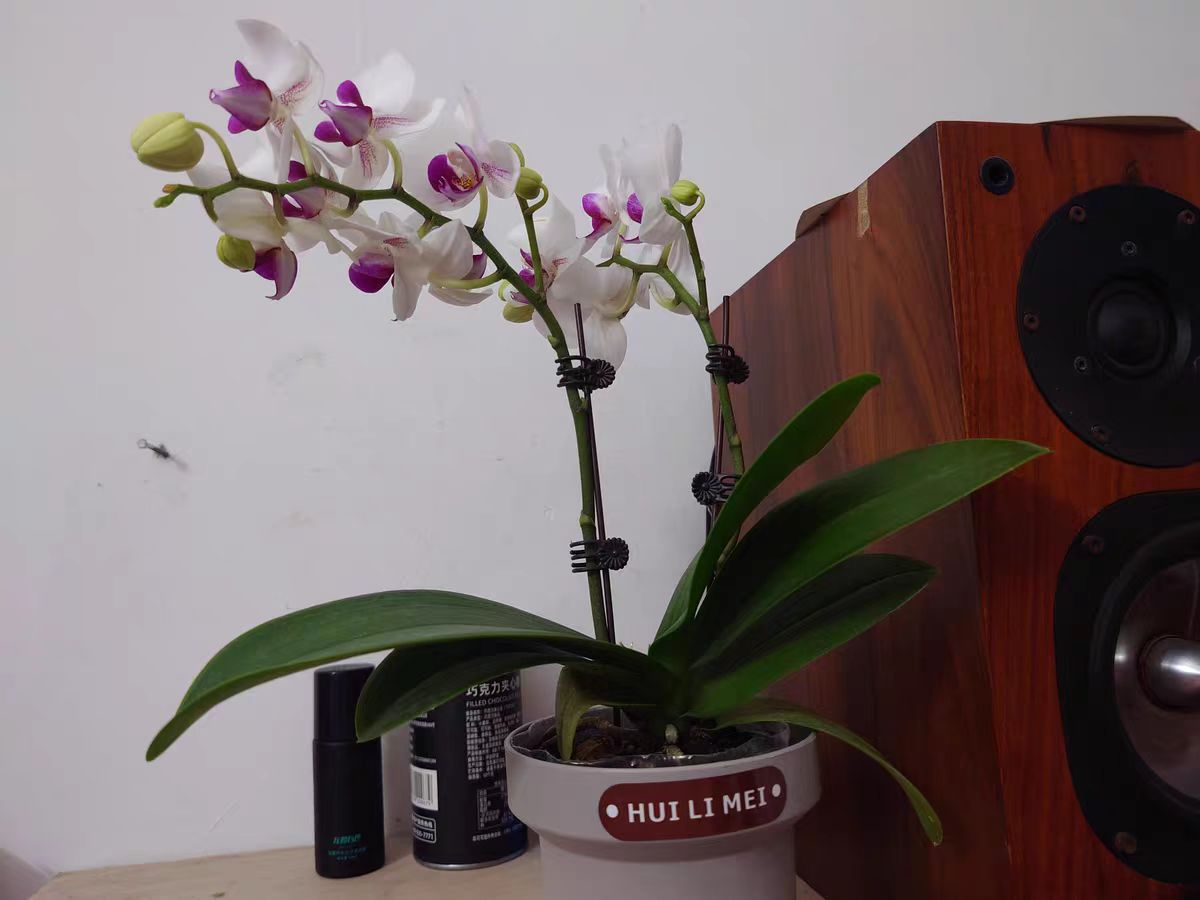During the cultivation of Phalaenopsis, the thin and weak flower spike is a common maintenance problem. As an important organ that carries flower buds and transports nutrients, the growth state of the flower spike directly affects the ornamental value of the plant.
Reasons for Thin Flower Spikes
Most of the reasons for the thinning of flower spikes are related to daily maintenance:
Insufficient Nutrients
From the formation of flower spikes to blooming, if the Phalaenopsis is only fertilized with nitrogen fertilizer for convenience or lacks fertilization for a long time, the plant will not have enough energy to grow thick flower spikes. Phosphorus and potassium fertilizers are crucial for strengthening flower spikes—their deficiency leads to nutrient deficiency in the spikes.
Inappropriate Light
Although Phalaenopsis fears direct sunlight, keeping it in a dim corner with less than 4 hours of daily light will hinder photosynthesis. Without sufficient "energy supply," the flower spikes grow slowly and thinly. Conversely, excessive light that wilts the plant will also affect flower spike development.
Improper Temperature Control
Phalaenopsis prefers a warm environment with day-night temperature differences. If the daytime temperature exceeds 30°C or the nighttime temperature drops below 15°C, the plant's growth will be disrupted. Sustained high temperatures cause growth disorders, while low temperatures inhibit flower bud differentiation and flower spike growth, resulting in thin and fragile spikes.
Impact of Flower Spike Thickness on Blooming
The thickness of flower spikes significantly affects blooming:
Thick Flower Spikes: They stably transport nutrients to flower buds, leading to large, thick-petaled, vibrant flowers with a long blooming period. Moreover, their strong support prevents the flower cluster from bending or lodging, enhancing ornamental appeal.
Thin Flower Spikes: They cannot meet the nutritional needs of blooming, often causing smaller, fewer flower buds that may yellow and fall off before fully opening. Additionally, their weak support makes them prone to breakage, which is a pity.
Tips to Make Flower Spikes Sturdy
To promote thick flower spikes, focus on the following maintenance steps:
Fertilization: Before flower spikes emerge, switch to phosphorus-potassium compound fertilizer (e.g., potassium dihydrogen phosphate), diluting it with water and applying every 10 days.
Light: Ensure 4–6 hours of diffused light daily. Place it on a south-facing windowsill in spring and autumn, and use a sheer curtain for shading in summer.
Temperature: Maintain 20–25°C during the day and 15–18°C at night.
By paying attention to these details, your Phalaenopsis will grow robust flower spikes next time!
What's wrong with the thin flower spike of Phalaenopsis?

Share with
Tagged in :




Leave a Reply